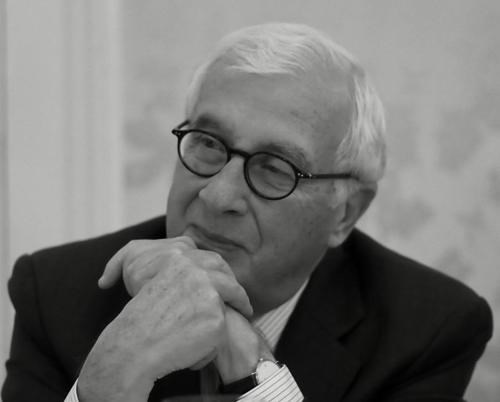
Barry M. Brenner, MD, passed away August 6, 2024. Following is an excerpt of my remarks regarding Barry at the American Society of Nephrology (ASN) Brigham and Women’s Hospital alumni reception.
“I knew Barry Brenner from summer 1998 until his demise—over 25 years—in my role as clinical chief at Brigham. I also connected socially, where I saw a human side of him—a gentleness with his beloved grandchildren and a love of fine things.
“To say that Barry was gifted is an understatement. He was without question the iconic nephrologist of our generation, but there were other aspects that stood out: his fierce loyalty to his family (Jane, Rob, Jenny, and his grandchildren) and to his friends (Dick Glassock, Beppe Remuzzi, John Dirks, Mark Zeidel, Julia Troy, Michelle Deraney, and Lee Riley, among many others); his stubborn determination to get answers to questions in nephrology through deep study, a clarity of purpose, and a dogged pursuit of the scientific method; his humanness, at times imperfect; his remarkable and unheralded generosity; and his commitment to the larger mission (the clinical applications of his research, leading various societies and journals, editing books, talking around the world for COMGAN [the International Society of Nephrology’s Commission for the Global Advancement of Nephrology], or offering advice and career counseling to his many trainees).”
Julia Troy, MD, who spent virtually her whole career working with Barry, wrote, “Barry was my best friend, and I miss him terribly. He and Jane would always include me in their family events, and I have had the joy of being close to their children, Rob and Jenny (and their spouses), as well as their beautiful grandchildren.
“Working for Barry was a wonderful experience. He was extraordinarily inquisitive. He would think of something and would give it to me to figure out, expecting a yes or no answer, and he didn’t take no for an answer. I was at a complete loss when the lab closed. It was a fun job, and I enjoyed going to work every day.
“We started working together at the National Institutes of Health. We went to San Francisco, then came together to Boston (Brigham/
Harvard) in 1975—a time I will never forget, as Boston was celebrating the bicentennial, and the city was so beautiful and welcoming.
“Glomerular studies in rats were a new field. Nothing was in the literature about how the glomerulus functioned. Utilizing the limited instrumentation available to us at that time, and with Barry’s unique ability to conceptualize how to measure pressure in rats properly, the original techniques of micropuncture and measuring glomerular pressure were developed.
“Barry invited fellows from all around the world to train with him, and his greatest gift was educating them to become leaders of their own research laboratories and clinical studies. In all of Barry’s publications, he took great pleasure in giving credit to each one that worked in his laboratory.”
Dick Glassock, MD, one of Barry’s closest friends, former president of the ASN and himself a major figure in nephrology, shared, “His contributions to our noble profession are legion, impactful, and lasting. The magisterial hypotheses he and his valued colleagues originated, now morphed into accepted theories, on physical forces controlling tubular fluid reabsorption and glomerular filtration maladaptive glomerular hyperfiltration injury, glomerular capillary hypertension, and the adverse consequences of low nephron endowment, can be equated with other landmark achievements in the broad domain of science, including those of Isaac Newton in physics. Collectively, they have exerted a profound impact on clinical practice and led to improved and prolonged lives for millions of those who suffer from the ill effects of kidney disease.”
Lee Riley and Michelle Deraney, who began working for Barry in their 20s, marking over 40 years with him, shared a playful, easygoing side of him that many of us did not know.
Michelle Deraney said, “Lee and I loved playing pranks on Dr. Brenner. One time after a holiday party, we literally stuffed 50-plus helium-filled balloons in his office bathroom. He came in the next morning (he always arrived around 4:30 or 5 am), and without turning a light on, opened the bathroom door. The balloons all came rushing out at him, and he claimed he had to put up his fists to fight the intruders off. He got over the incident and had a good laugh with us.
“Another time, we planted a rubber chicken in his briefcase right before he left for the day. At home, in the middle of night (when he often reached for an index card and pen to write his thoughts), he woke Jane up to say he thought there was a rat in his briefcase. He and she both got a broom ready to defend themselves. The next morning, he actually took the time to hang the rubber chicken up under the desk.”
Dr. Brenner, not only did you have a life well lived, but you made a massive difference to the world.
The opinions expressed in this column are the contributor’s own and do not represent those of Nephrology Times.







 © 2025 Mashup Media, LLC, a Formedics Property. All Rights Reserved.
© 2025 Mashup Media, LLC, a Formedics Property. All Rights Reserved.